Propagation
GROWING & SHOWING
CHRYSANTHEMUMS
WITH THE
DARLINGTON DAHLIA & CHRYSANTHEMUM SOCIETY
Season Ends - Season Begins
Stock Selection
This should be carried out throughout the growing season and any suspect or obviously diseased plants discarded along the way.
As blooms reach full development select the best samples and mark the plants as stock samples for next seasons propagation, the number of stools you keep will depend on the number of cuttings you will need.
Some cultivars are shy at throwing cuttings, this you will learn as you go.
A good time to start lifting your stools would be November to early December after the flowering season.
LIFTING & PREPARATION OF STOOLS
Plants in the ground
Cut back the main growing stem and any basal growth, lift the stool from the ground using a fork or spade and shake off the surplus soil from the root ball and trim back the roots.
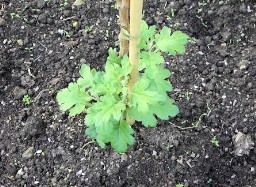
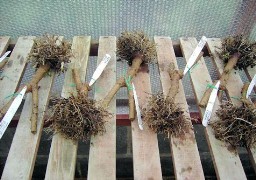
• Plants in Pots
Cut back stem and basal growth, remove from pot, loosen off excess compost and trim back roots or cut into 100mm cubes.
If you have the room plants can be left in their pots and cuttings taken direct from there but cut back any old basal growth before you start.




Boxing up of Stools
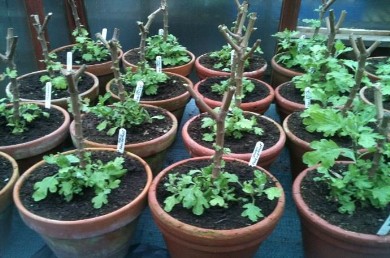
Stools can be boxed up into a variety of containers from standard seed trays, moduletrays, recycled mushroom or tomato boxes or any suitable container but always make sure they are clean, a weak solution using household bleach works well.
You can use a multi purpose compost or a mix of equal parts sphagnum moss peat , sterilised loam, perlite, sharp sand or grit to give it good drainage.
No added fertiliser is required at this stage.
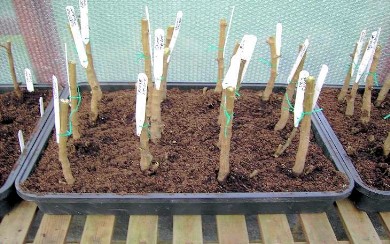
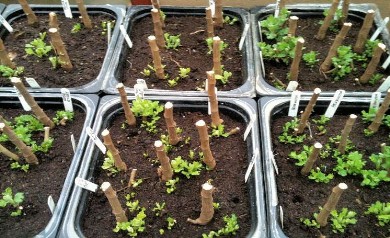
Once prepared the stools should be kept cool and on the dry side until next season comes around when they can be brought into the heat of the greenhouse, watered and will start to produce suitable cutting material.
TAKING CUTTINGS
Preparation
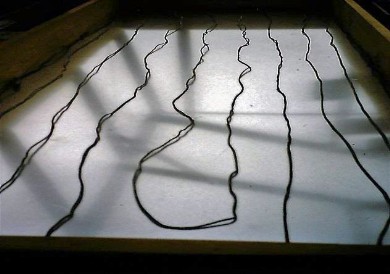
Cuttings will root faster with bottom heat and a propagator or a heat pad is a great help.
A soil warming cable can be covered with sharp sand and kept damp to transfer the heat or an aluminium foil will do the same and provide a warm base to place trays of cuttings on.
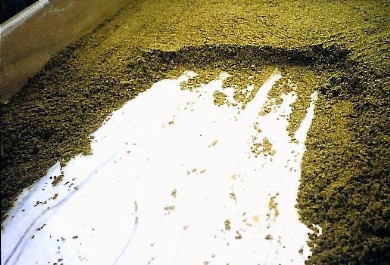
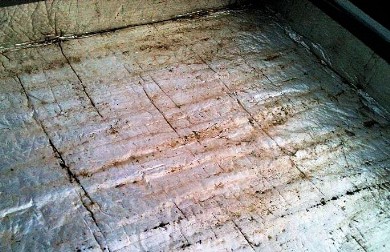
Prepare a work station and have everything you need at hand to work with and cleanliness is most important,
use a light solution of household bleach to clean your blade in between varieties and reduce the risk of transferring virus between different stock
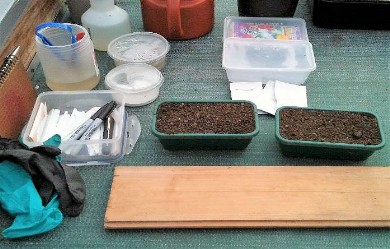
Rooting Compost
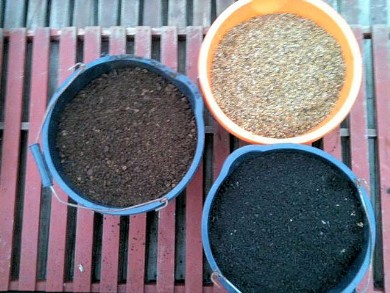
If using a mixed such as a 1-1-1 which is equal parts of sterilised loam, moss peat and sharp sand or fine grit mix it a couple of weeks in advance of taking your cuttings and store in your greenhouse to keep it on the dry side and not get to cold.
A mix of multi purpose compost and perlite works well and is light and easy to mix.
Multi purpose compost can get compacted in the bag so give it a good mix to break it up before use.
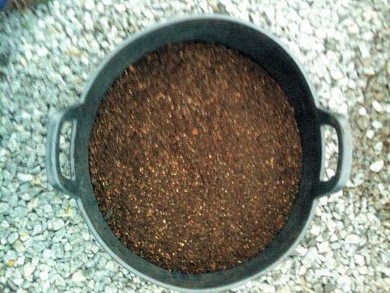
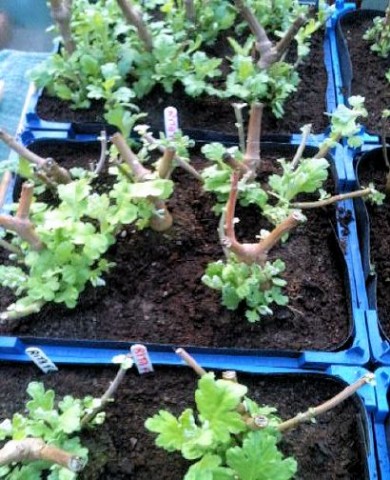
Cuttings should be in a turgid state and can be snapped or cut off the stool.
Try and take a batch if you can and keep them all the same length this will give plants of a similar status with a better chance of getting even flowering .
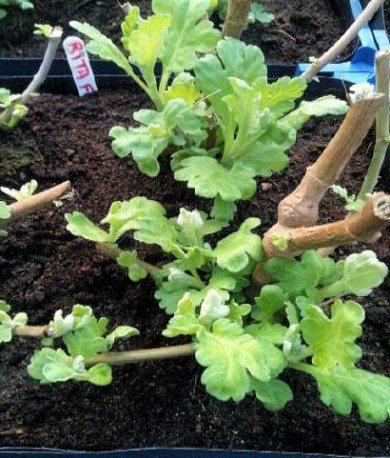
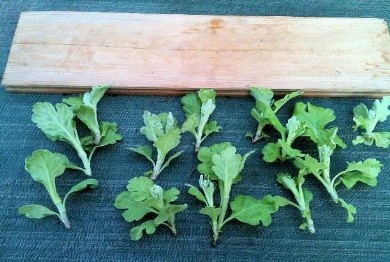
Trim the ends and dip into a rooting compound before inserting them into your rooting mix, lable each tray and add the rooting date for future reference.
Cuttings will root faster with bottom heat so place them onto your propagator remembering to keep them turgid with a light overhead spray and shade them from direct sunlight.
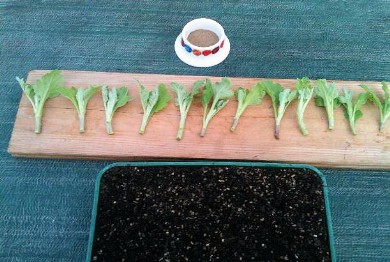
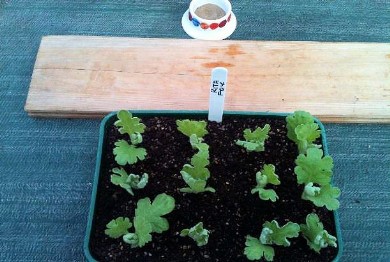
Cuttings should root in 14-21 days you will notice them starting to stand up as they begin to growand at this stage they need to be taken of the heat, placed in good light and left to develop for afurther 7-14 days before you move them on.
This is a good time to prepare the compost ready for the first move and store it in the greenhouseto keep it dry and out of the cold.
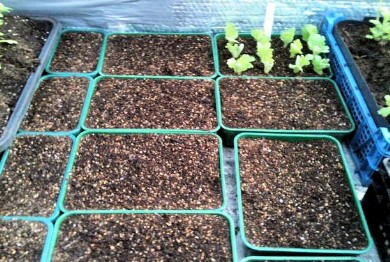
You can use a multipurpose compost for the first move or if you are using a soil based compost a good mix would be a one with a ratio of 3 parts sterilised loam, 3 parts moss peat with 2 parts grit.
The plants will need feed to achieve good growth and a tried and successful mix would be :-
4 ozVitaxQ4 Fertilizer
2 ozCalcified Seaweed
2 ozGround Limestone
2 ozEpsom Salt
Add this to 1 bushel ( 8 gallon) of compost
We hope you found this tutorial informative
